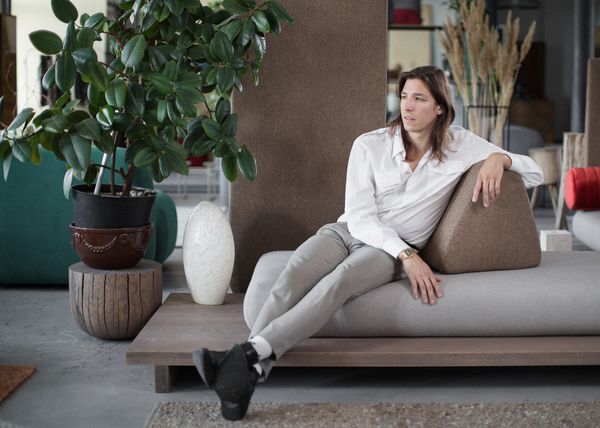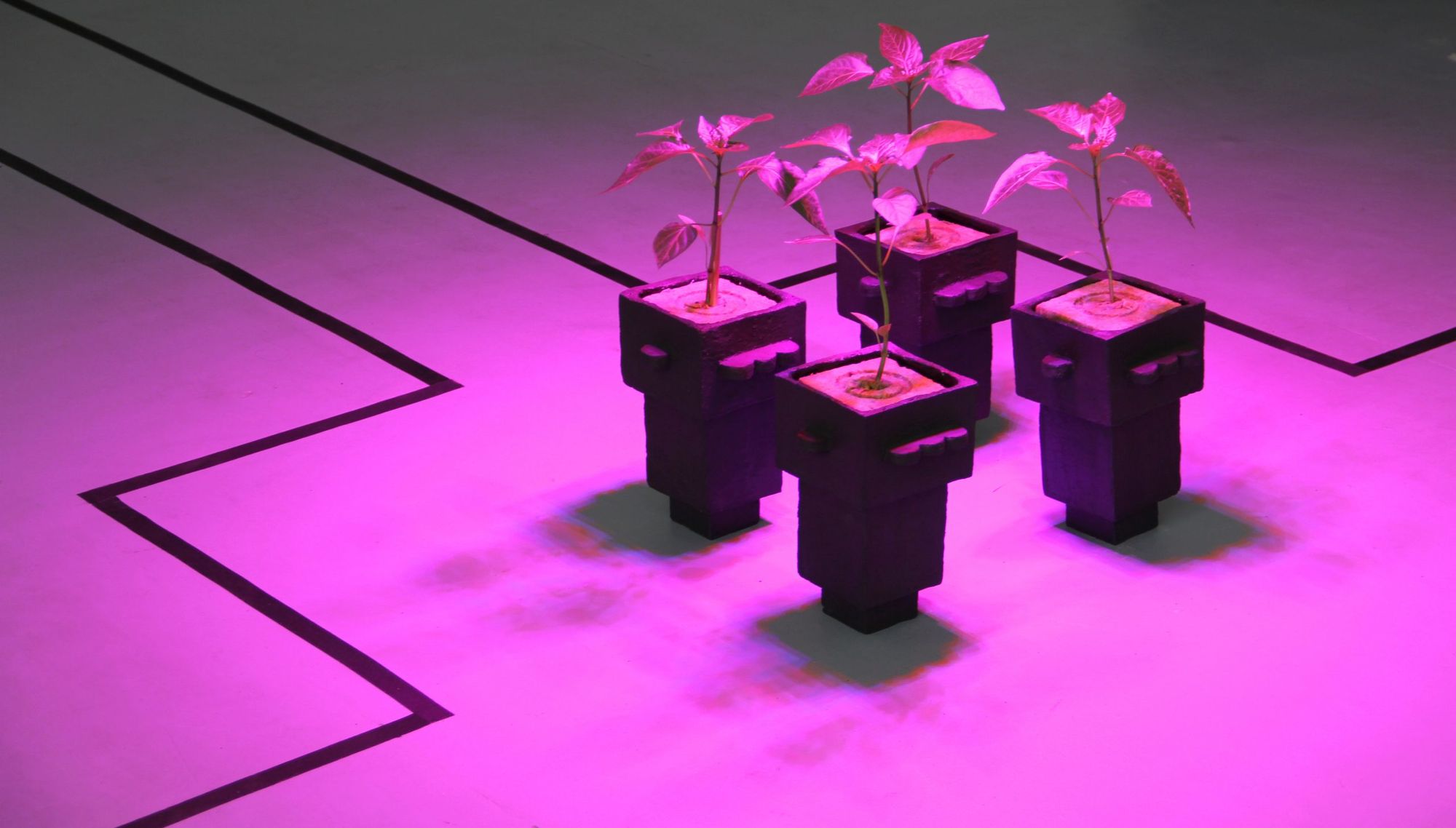It’s not easy to define Fuzzy Earth’s work: they operate at the boundaries of architecture, design, art, agriculture, horticulture and technology, while their mediums go beyond these categories. They demystify entrenched belief systems, encourage reflection and questioning while not seek to simplify the complex layers of our world.
Gedeon Tekla and Sebastian Gschanes create spaces, objects, and events that explore our relationship with nature and technology, using methods including speculative design and critical thinking. Tekla studied architecture in London and Sebastian, from Vienna, graduated as a landscape architect and gardener. They met six years ago in Budapest and have been working on projects together ever since. They have been running the Fuzzy Earth collective full-time since last year. Their mission is to question the role of ecological environments, industrial landscapes and botanical institutions through various media.
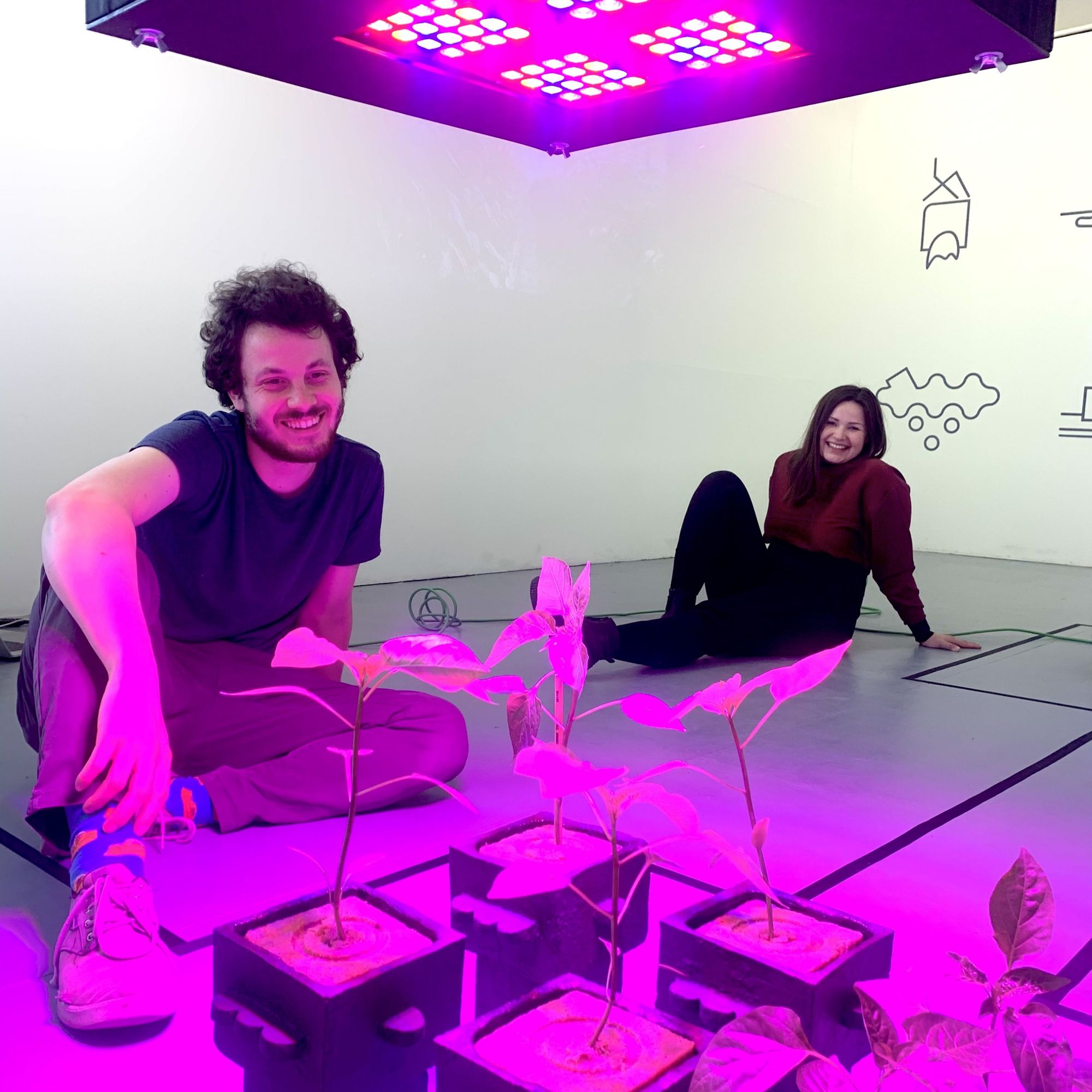
“Fuzzy means something blurry and even confusing. This is our intention to go against all straight and clear decided definitions of the world itself. We are interested in asking questions and revealing processes, showing the complications behind the way we live. With each of our projects we get to know different situations, people, and processes and then we just show it as we found it, we all the confusion with all the multi-layer that’s with it. We also borrow a lot from theatrical practices: we use storytelling and character design to create alternative scenarios of the present. We kind of create these options and invoke active thinking with the viewers rather than offering them any direct response on a tray,” they said.
Tekla and Sebastian never state scientific facts but focus on personal perspectives and strive to build an emotional connection with the viewer. They believe that the climate crisis goes hand in hand with a lack of emotional engagement. They also have a solid techno-optimistic attitude and want to redefine the technophobic concerns. “We aim to build an optimistic future vision in response to climate challenges and technology changes. In our opinion, creating fear is always easy; to think optimistic about the future in a collective way is the biggest challenge. We think art is a very interesting experimental media to start having a conversation with other people about this,” they concluded.
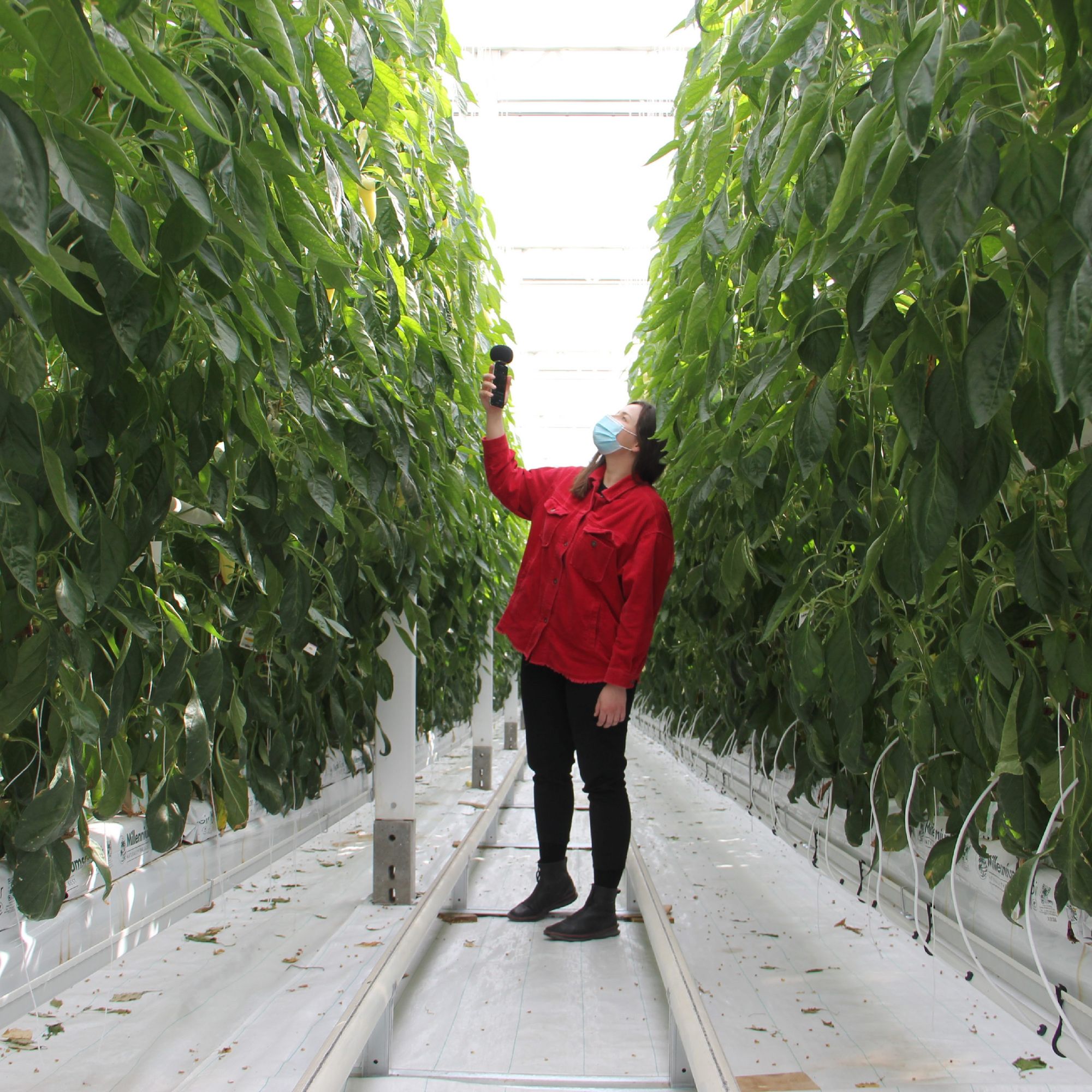

Technological changes in agriculture are one of their most significant sources of inspiration. In their project Not Quite California Wonder, for example, they explored the process of growing bell peppers: farmers no longer even go into the greenhouses in real life, they control the process via monitors, and the plants are looked after by sensors and robots. “We want to give a snapshot of this world, just to bring everyone up to date like, that this is not some science-fiction, this is what’s happening right now, in Europe as well,” said Tekla. They then created different narratives around their multifaceted research, including the pepper itself, which they chose as a protagonist for a reason. Bell peppers are an important national symbol for Hungarians, who were quite sensitive about the fact that these vegetables are actually produced in laboratories. During one of their actions, for example, they rented a stand in the Rákóczi Square Market Hall and used themed-artworks to spark conversations on the subject. “We enjoyed being provocative in that situation. It is important for us to demystify the romantic vision of nature; without understanding the environment we live in, it is very difficult to do anything about the challenges we face,” said Tekla.

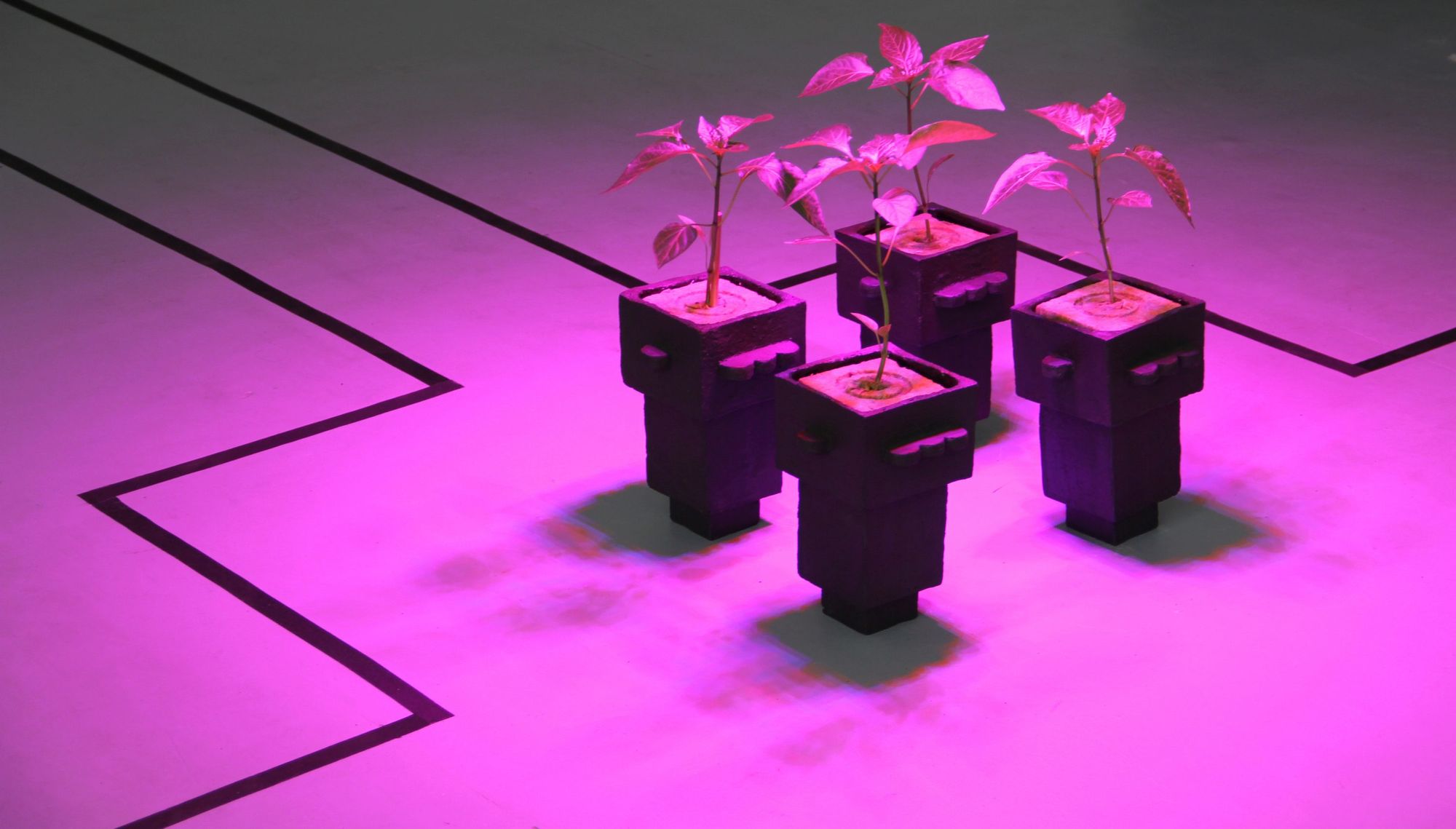
In another project, they focus on lichens: the ever-present immortal organisms that only die when humans scrape them off. They wanted to dedicate a public sculpture to them that, contrary to convention, does not commemorate the past but commits to the future. “Lichens grow a millimeter a year, so in ten years’ time, they will only be a centimeter long, but then in a hundred years when we are no longer alive, they will thrive,” they said. The sculpture in the 11th district, named Shimmer, was created together with the students of the College of Architecture after a week of camping and lichen study in the Pilis. The ring-shaped sculpture comprises twenty different segments, each designed by a student to provide a home for lichens. Sebastian and Tekla are also paying special attention to the afterlife of the project: “We have an interest in strategic thinking and a collective guardianship of our environment. We want to create a community that would take care of it, so that’s why we work together with students. We are planning to create events around the stature annually, to see how these organisms grow,” they said.
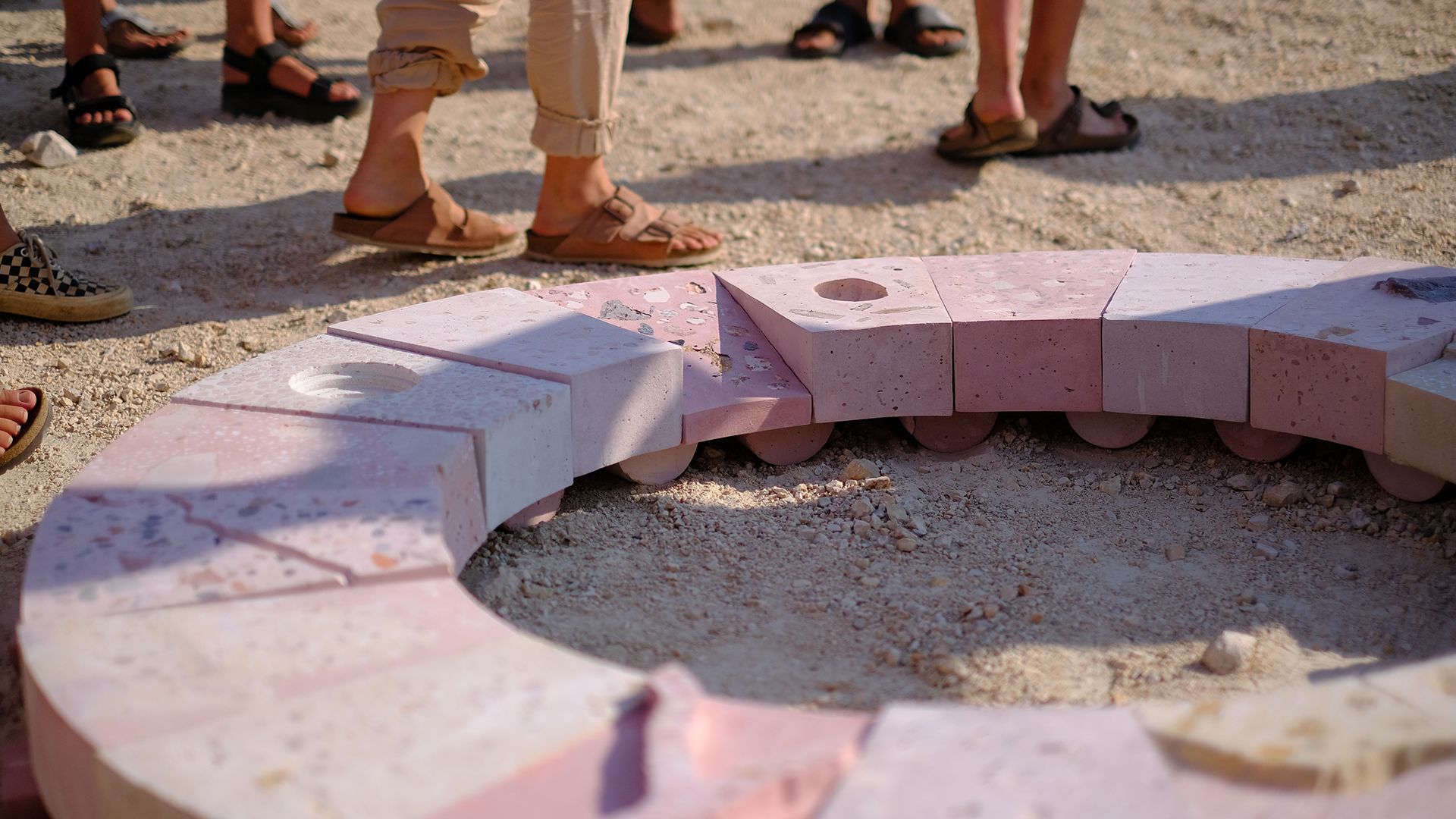
Tekla and Sebastian would like to move further towards education in the future: “Students are pretty solution-oriented, which is quite the opposite of our approach. I think sometimes it is good to push them in our way of thinking because it opens new perspectives for them,” says Sebastian. “They were trained to draw lines and build walls, but we rather want them to create openings and connections and embrace multi-disciplinarity. We definitely need problem-solvers for the short-term problems, but we also need visionaries for the long-term,” adds Tekla.

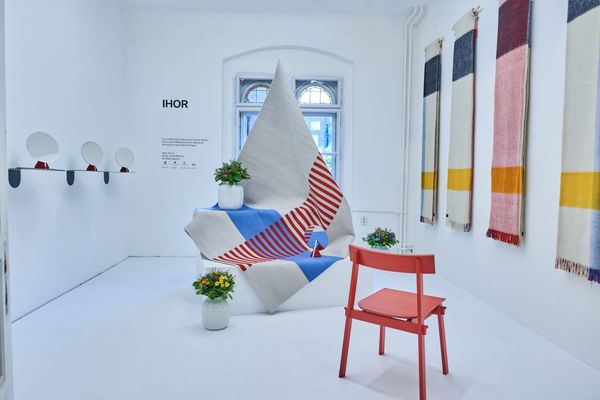
You must see these at Designblok, starting tomorrow!

360 Design Budapest is back!
